मुंबई
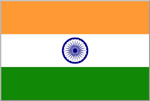
Bustling economic and cultural hub

Mumbai is the largest city proper in India, but unlike the larger metropolitan area of Delhi, its growth is restricted by being squeezed onto the island of Salsette, itself formed in part by the merging of the original seven islands of Bombay during the 19th century. The name Bombay possibly came from the Portuguese, but as a legacy of British colonial rule it was officially changed to Mumbai in 1995, followed shortly by the renaming of Chennai (Madras) and Kolkata (Calcutta), amongst others. It is by far the biggest port in India, and its financial and entertainment capital, being the home of Bollywood cinema.
We only spent a couple of nights in Mumbai, having flown down on newcomer budget airline SpiceJet from Delhi, before heading on to Goa. Being in our twenties, this didn’t allow us much time for sightseeing following the inevitable late nights at Polly Esther’s disco in Colaba, the old historic area and centre of the action right at the bottom of the peninsula. It hosted without doubt, however, the most abject poverty that we witnessed in India, with street kids asking not for money but simply for the last bit of whatever food we happened to be eating.
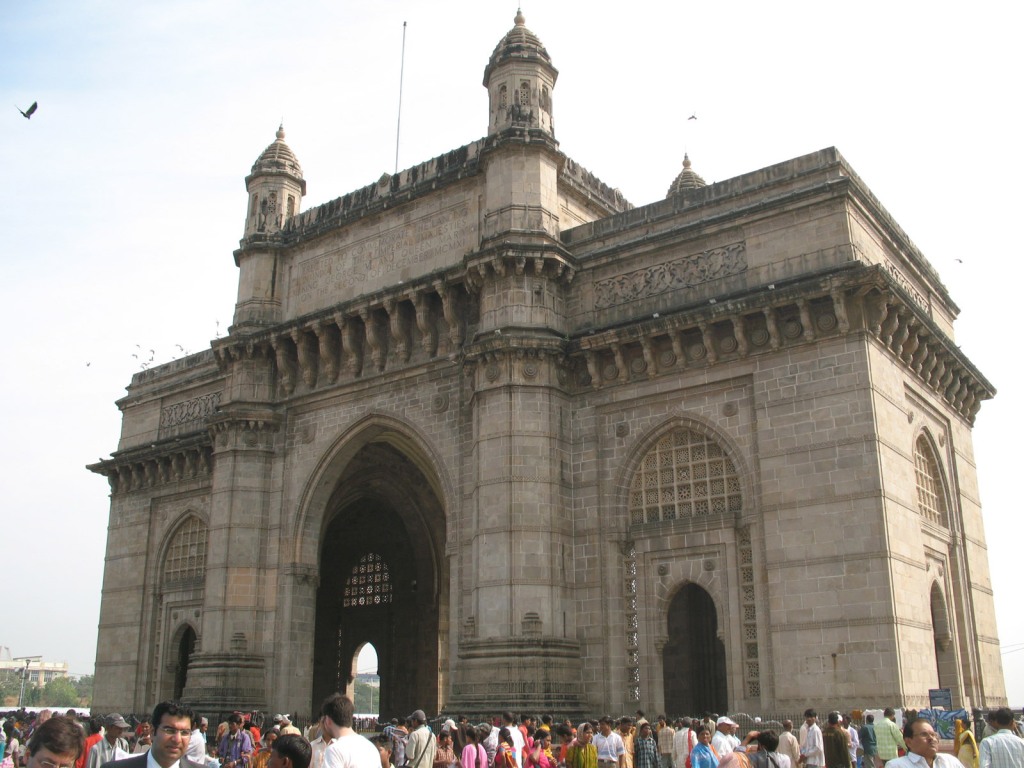
The Gateway of India, symbolic entry point to Mumbai for traders from across the seven seas. And absolutely rammed with people. Not to be confused with Delhi‘s India Gate, it was completed in 1924 following the visit of George V to be crowned as Emperor of India. Today its triumphal-arch form is a key symbol of the city, and popular hangout.
However it was several hours after our landing in the city that we were able to reach our lodgings in Colaba, due to the typical afternoon traffic. The journey of just over twenty kilometres took over two hours, in both directions, but our taxi driver took it all in his stride.
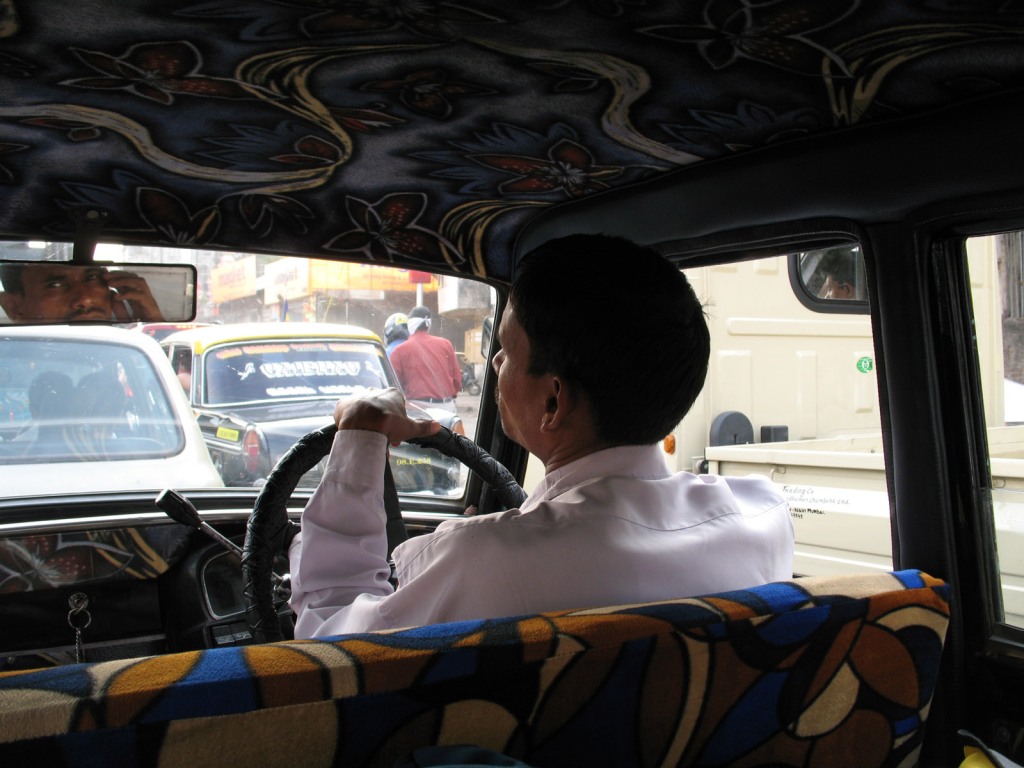
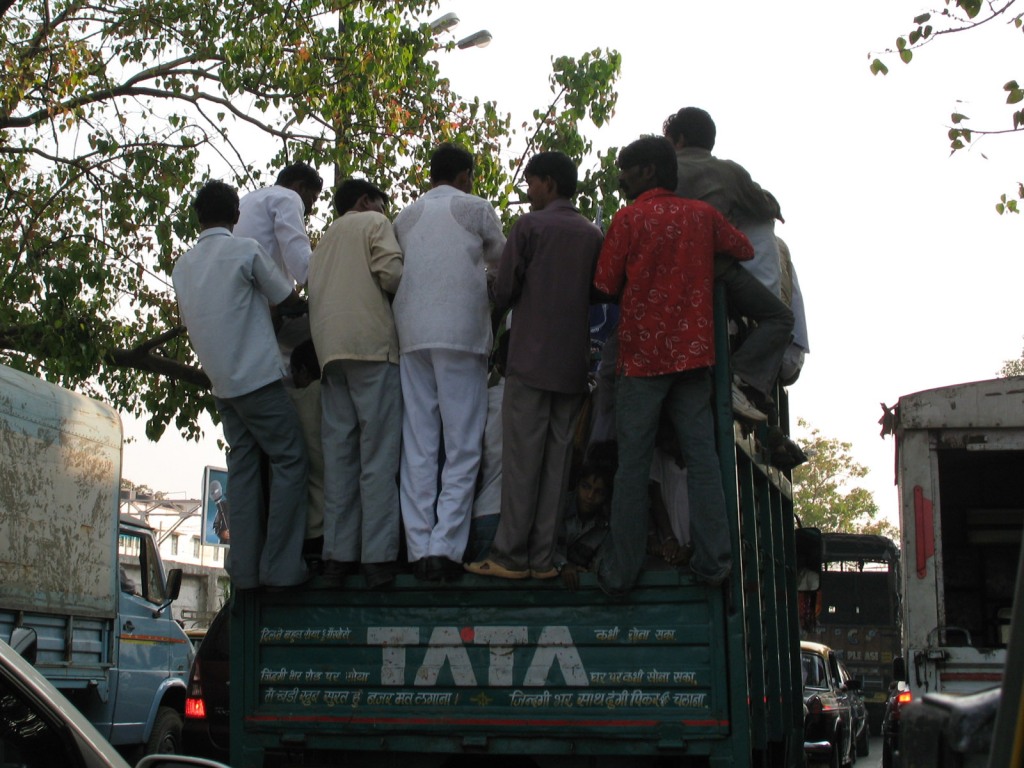
During our crawl from the airport to Colaba, we witnessed the rigours of Indian public transport. I’m pretty sure there’s more space upfront, lads.
The domes of the Taj Mahal Palace and Tower Hotel are a welcome sight for any weary traveller that can afford to stay there. Which didn’t include us.
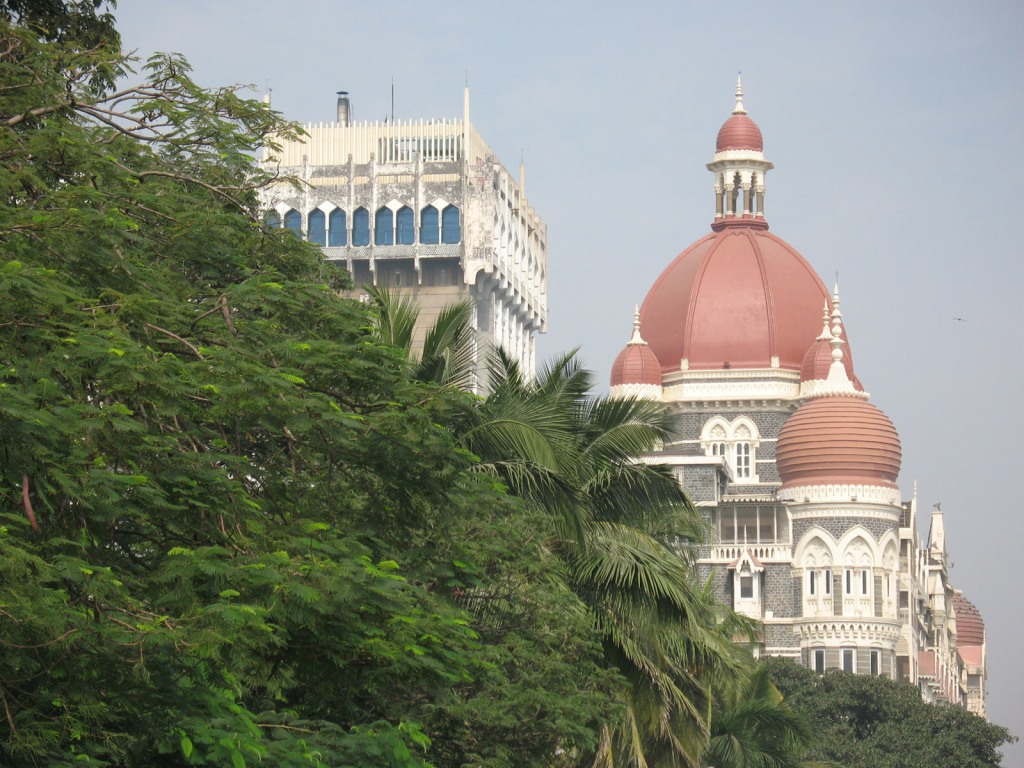
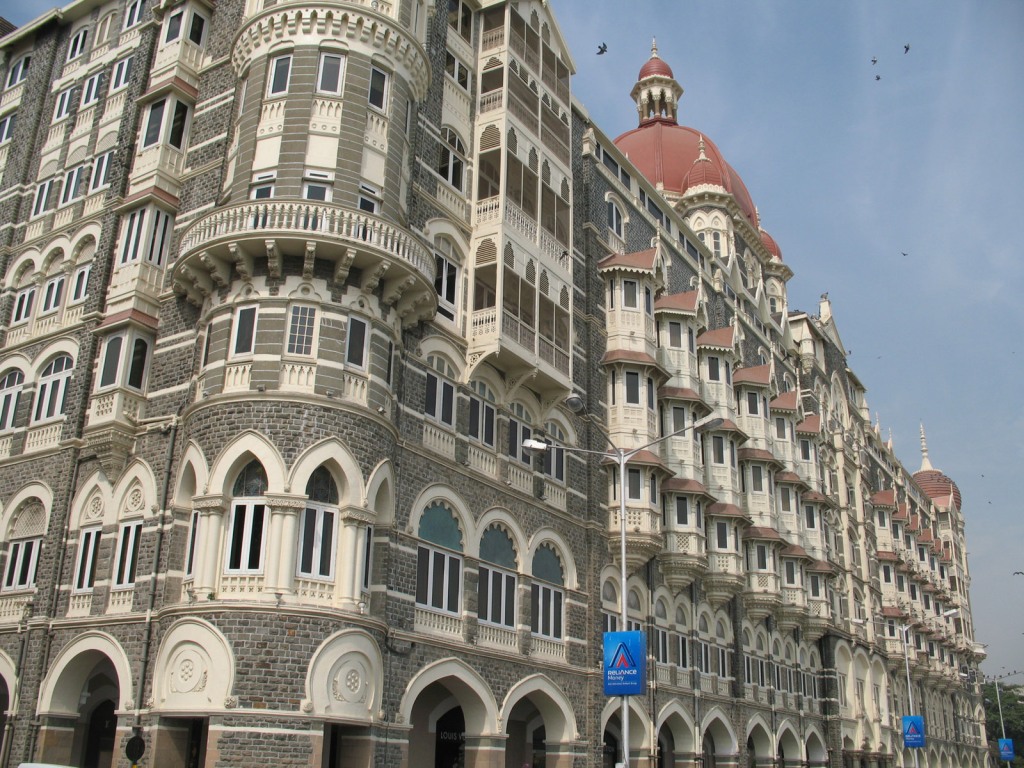
The Taj Mahal Palace Hotel is the top grande dame hotel of Mumbai, opened in 1903 and named after the country’s most famous attraction up in Agra. Although its five stars precluded us from staying, we did go in for offensively pricey mojitos one evening.
The Gateway of India stands right opposite the Taj Mahal Palace Hotel. It was the site of the departure of the last British troops from India in 1948, the year after independence.

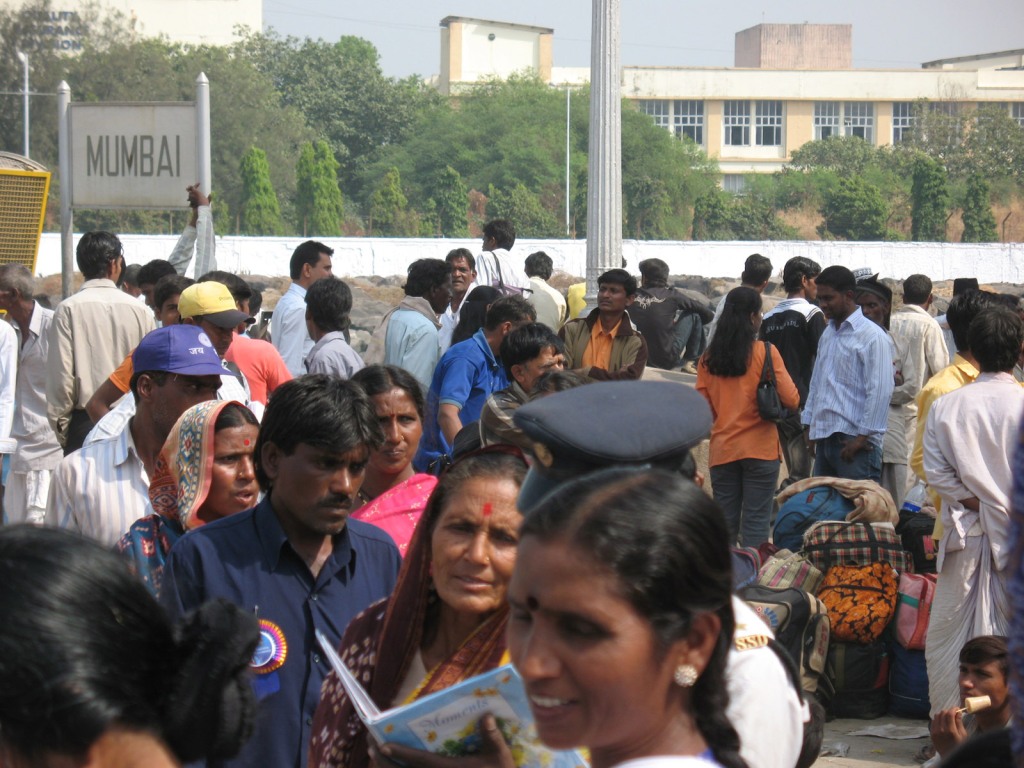
A continual mass of people populated the area around the Gateway of India. I picked up a few interesting faces in this shot.
Given the amount of personal belongings a lot the people had with them, I can only presume that at least some must have been waiting for ferries to Elephanta Island, or perhaps further afield.
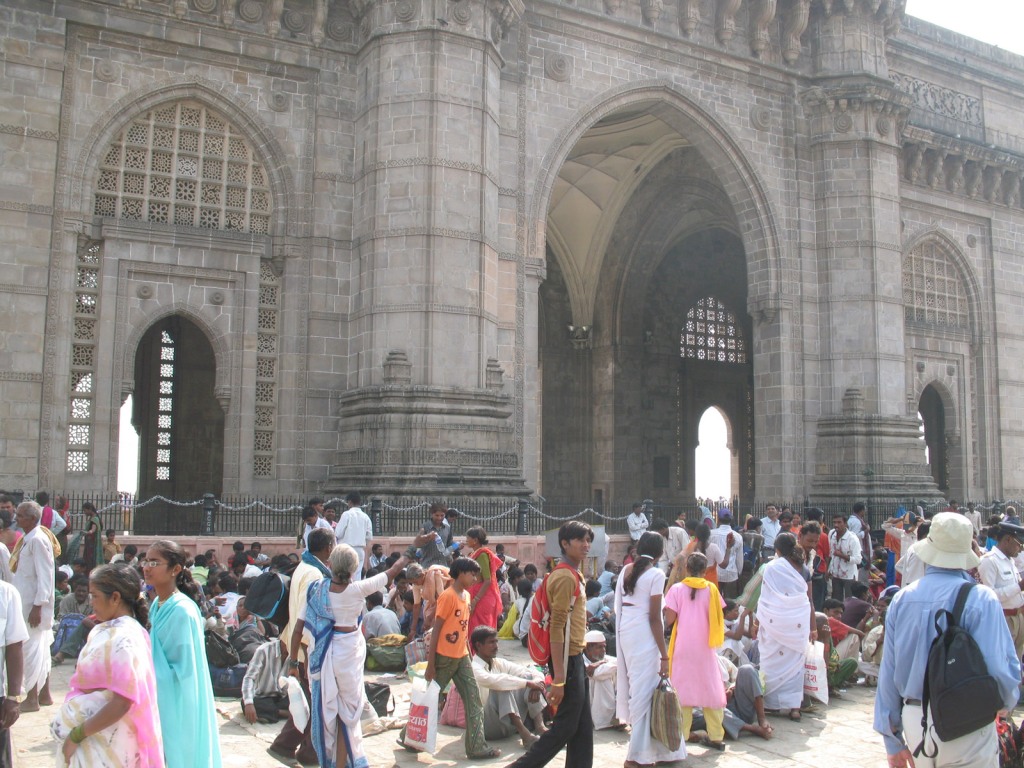
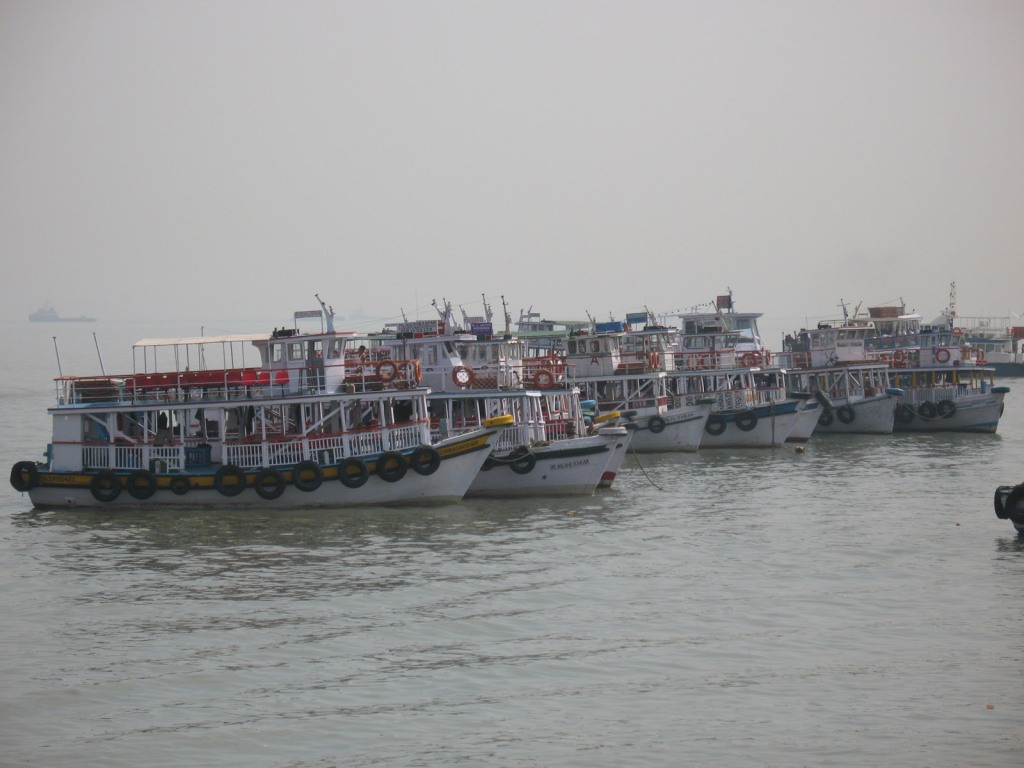
Ferry boats wait at anchor just off the Gateway of India. Most run to locations within the bay, or to the other side at Navi Mumbai. Since my visit, a twenty-one kilometre bridge has been built spanning the entire bay, opening in 2023 the Mumbai Trans Harbour Link will be the longest sea bridge in India.
The Taj Mahal Palace Hotel was opened by an Indian of means, so the story goes, that was refused entry from a snooty British establishment, so built his own hotel to be even better. Just under a year after our visit the hotel was part of the 2008 terrorist attacks, in which thirty-one people were killed, with foreigners being singled out by the Pakistani perpetrators. There were several explosions and a fire destroyed the roof, during a siege that lasted three days.
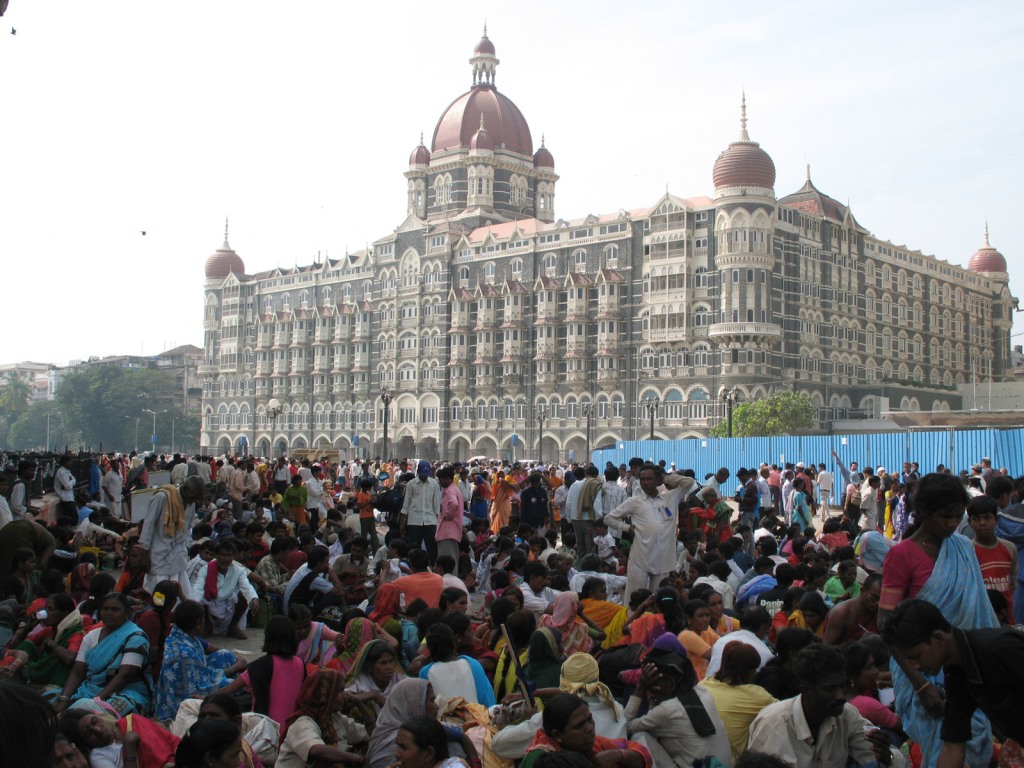
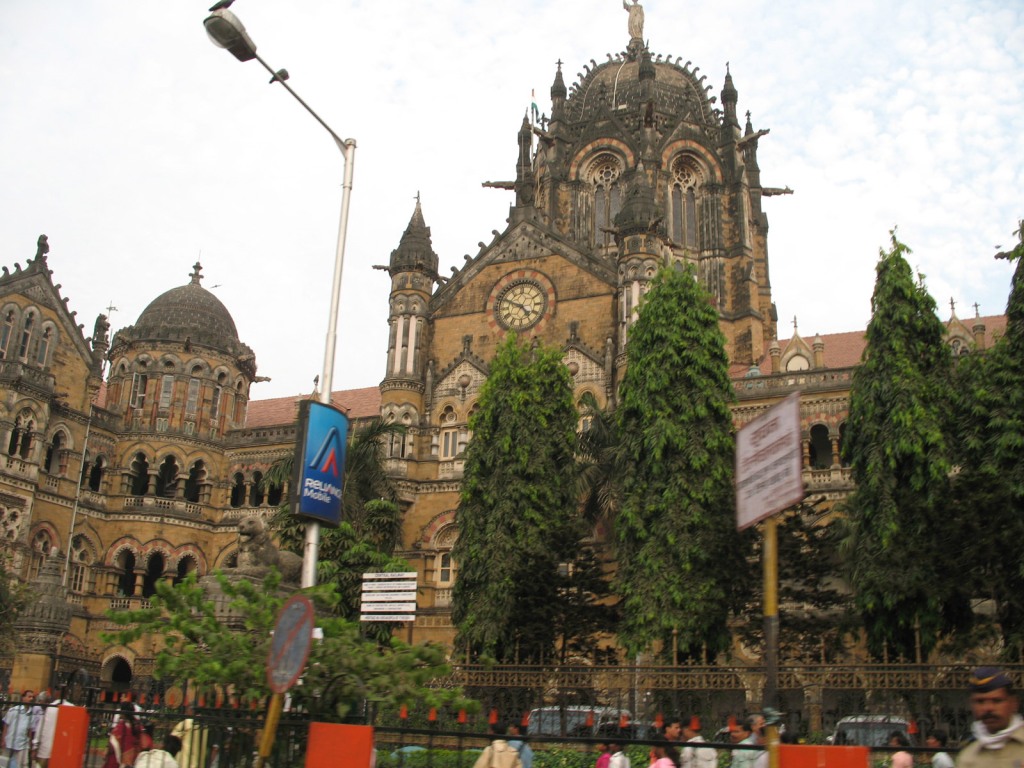
A less than skilful shot of Chhatrapati Shivaji Terminus, seen as we cruised past in a taxi. Originally opened as Victoria Terminus in 1888, it was renamed in 1996. The historic centre of Colaba has several grand old buildings such as this one, and I wish I’d spent more time having a proper look around – and getting some decent photos!
The old Bombay name persists, not just in legacy company names but also informal reference amongst some locals, in much the same way Ho Chi Minh City is still referred to as Saigon by its residents.


Shahid Bhagat Singh Road in Colaba, an example of the commercial district in the historic centre. There were some excellent tailor shops around here, and I found myself purchasing a couple of new shirts.
Our lodgings for the two nights at Garden Hotel, which I was pleased to find was still in operation during my 2023 re-write. Basic but comfortable, we made use of the services of a nearby fancier hotel for a swim.

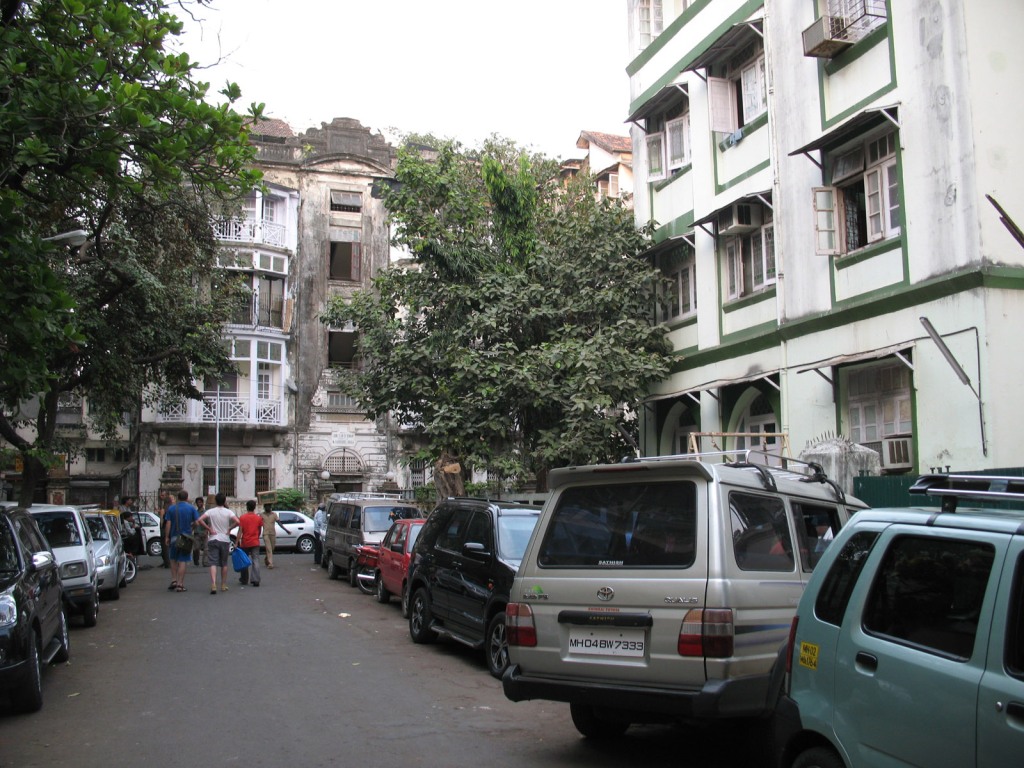
Heading up Oliver Street towards the Taj Mahal Palace, this is a typical residential street of Colaba.
Colaba is fairly dense and with the high proliferation of cars, parking is a problem. Although drivers appear to laugh in the face of such threats as these.
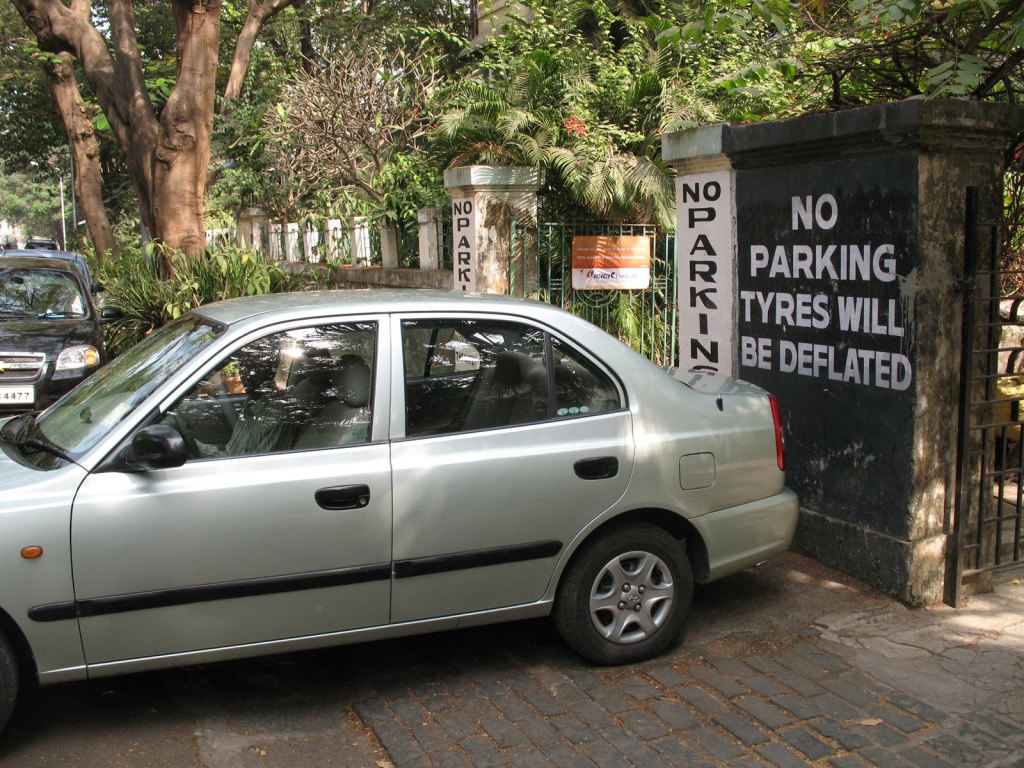

Café Mondegar is one of Mumbai’s historic cafés, running since 1932 and a good place for a couple of evening beers for us. It is a block away from Café Leopold on Colaba Causeway, another establishment we dropped in to.
No trip to Mumbai would be complete without some Bollywood magic, so we headed up to the art deco Metro Adlabs cinema to catch “Om Shanti Om”, on the recommendation of our hotel. As it was no longer the headliner, it wasn’t sold out, but ended up being the biggest movie of the year. Not knowing what to expect from our first taste of Bollywood, we were blown away by how entertaining it was, and particularly liked the pakora served in place of popcorn. We all had to stand for the national anthem before the picture, and there was even an interval, just like UK cinemas of yore. The film was so good (the music in particular) that I bought the DVD, and have since been on the lookout for more Shah Rukh Kahn classics.
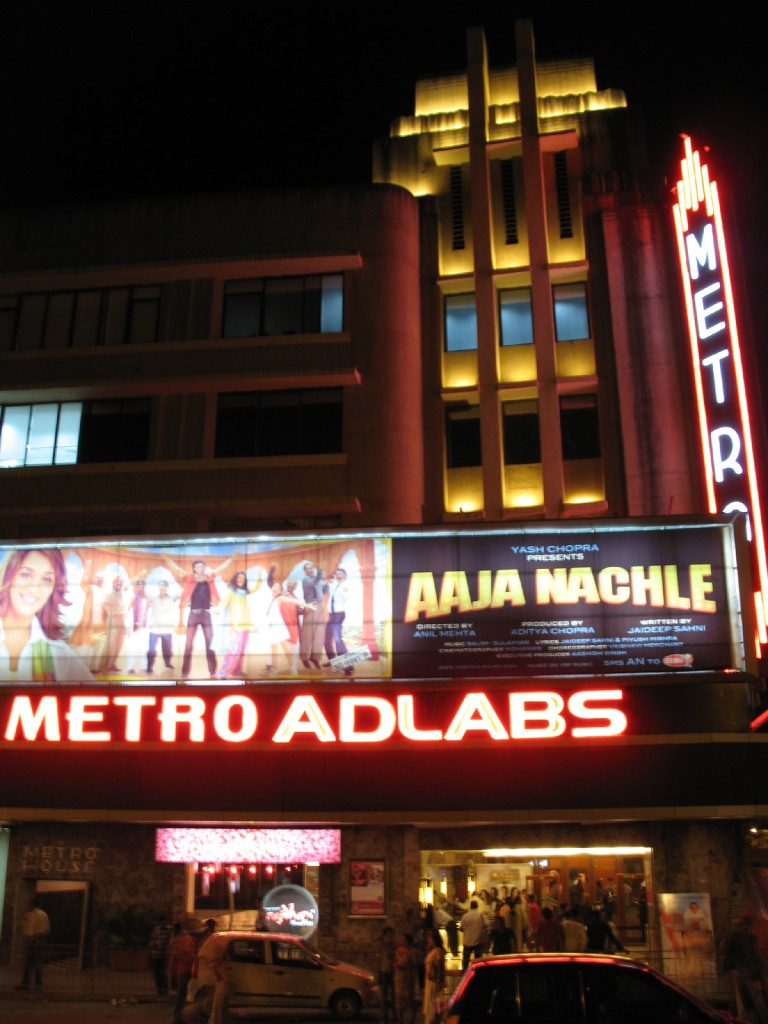
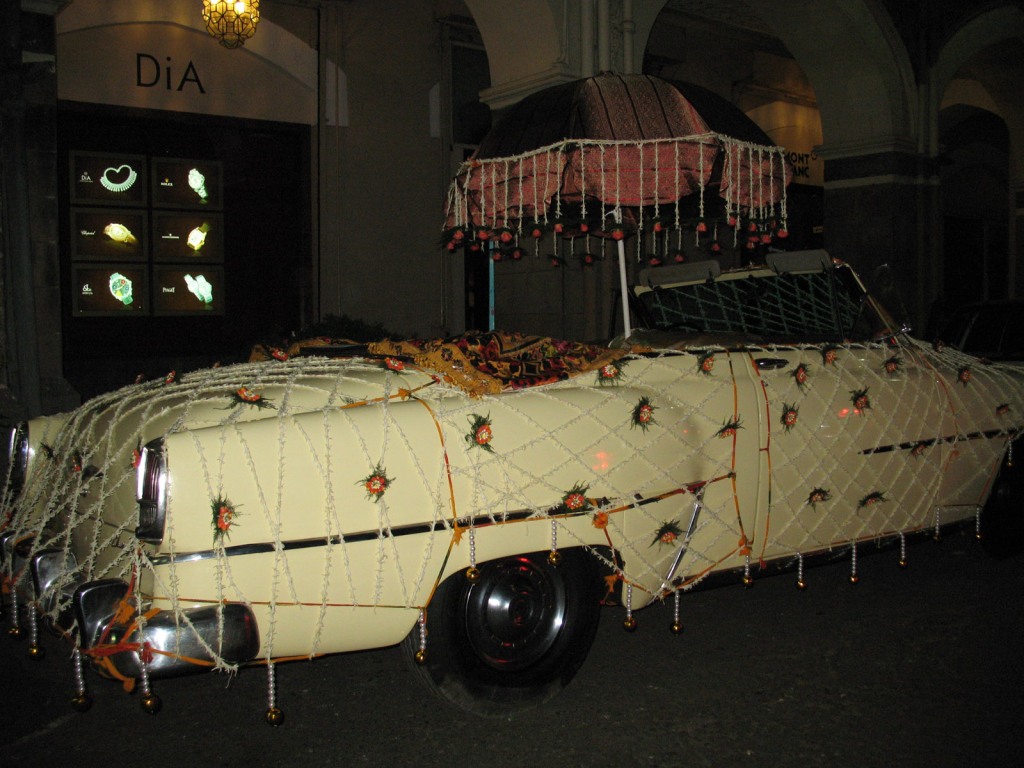
Back in Colaba, we only wished we were travelling in such style and luxury as these customers of the fancy shopping district.
On our way back to the airport, we cruised along the famous Marine Drive, with the new apartment towers appearing in the distance. I understand in the years since my visit that the skyline has boomed, rapid development to support the rapidly increasing population. The city is enormous, with over twenty million people it’s one of the ten largest in the world together with the likes of Tokyo, Shanghai and Cairo.

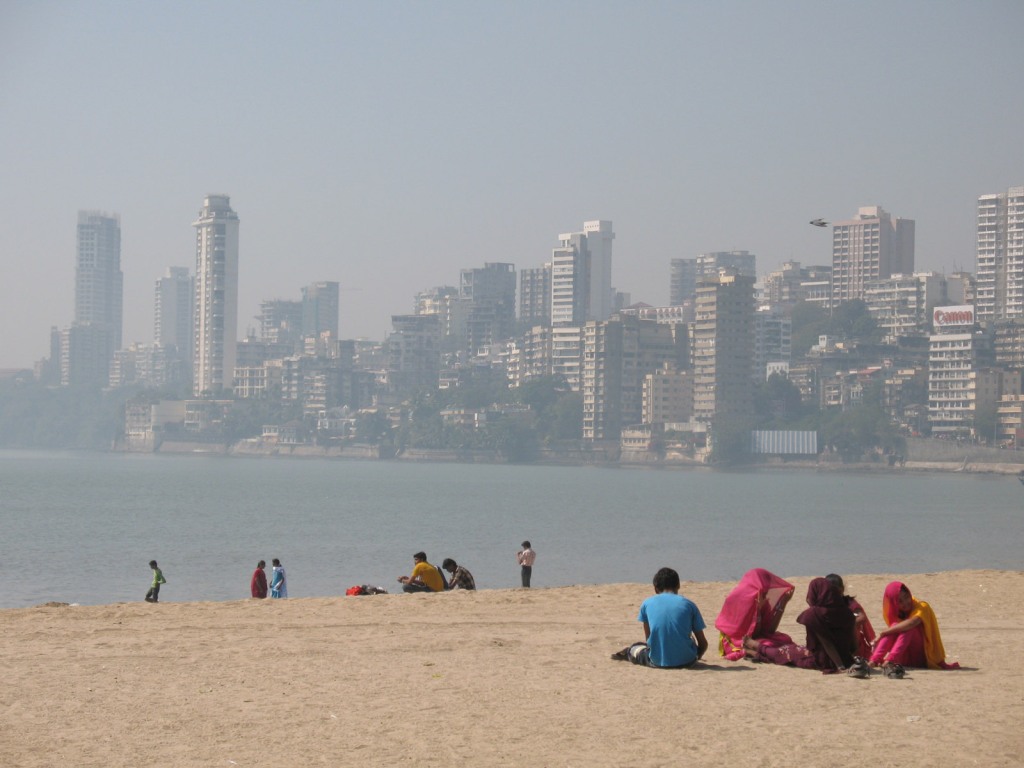
Mumbai’s equivalent of Miami’s South Beach: Chowpatty. The place to see and be seen, although Indian conservatism strongly influences one’s beach garb. Chowpatty Beach was remarkably clean for its location, right in the middle of Mumbai, but swimming is not advised.
These street kids were pretty cheerful and larking around. Digital cameras were still fairly new at this point, they all demanded a photo, and to see it, of course.

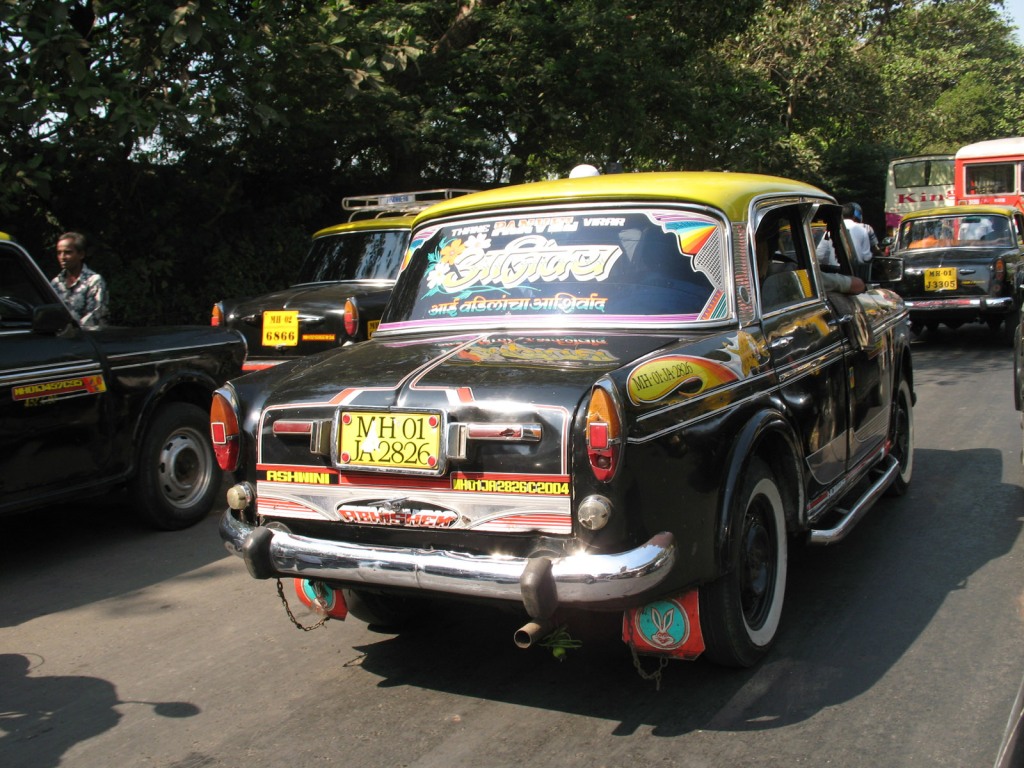
The ubiquitous Mumbai taxi, the Hindustan Ambassador Classic, largely unchanged since its introduction in 1957. Unlike everywhere else we went in India, there was a distinct lack of tuk-tuks and cows in Colaba, so we were forced to step up a level in transportation comfort. Perhaps there is a huge cattle grid at the perimeter, keeping Bessie and Mabel out.
At the domestic airport terminal while waiting for our flight to Goa, I saw this advert promising Indian migrant workers a better life in the construction industry in the Emirates. Burj Dubai was renamed Burj Khalifa in the wake of the 2008 financial crisis, and by this stage in late 2007 it was well on its way to completion.
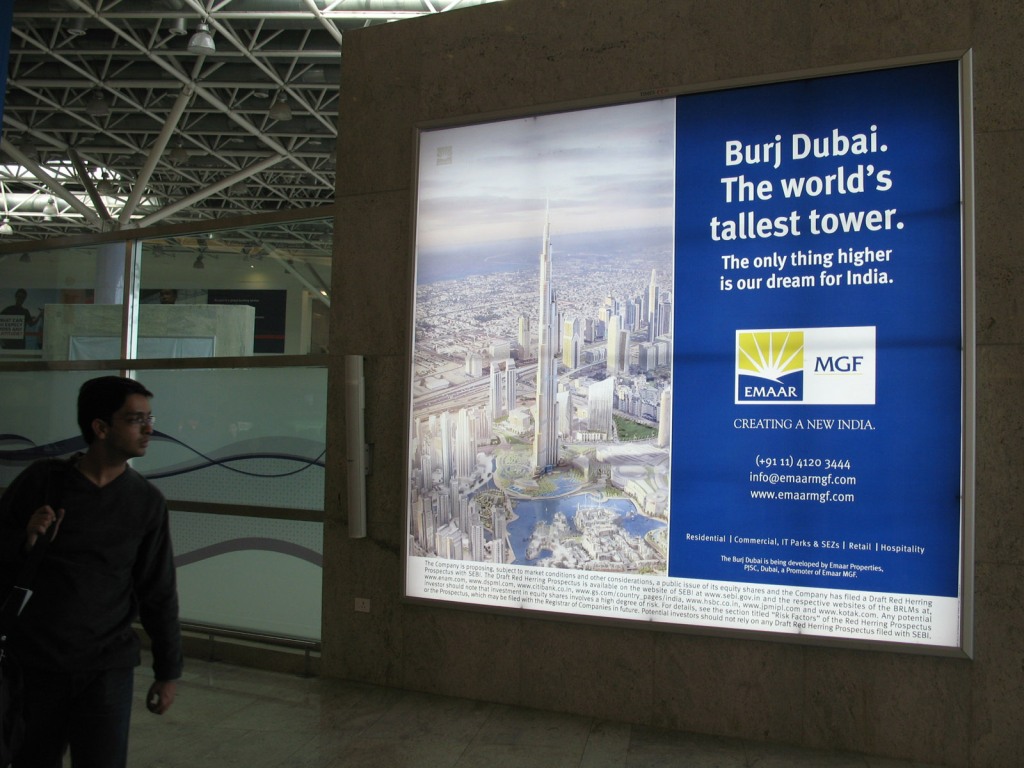
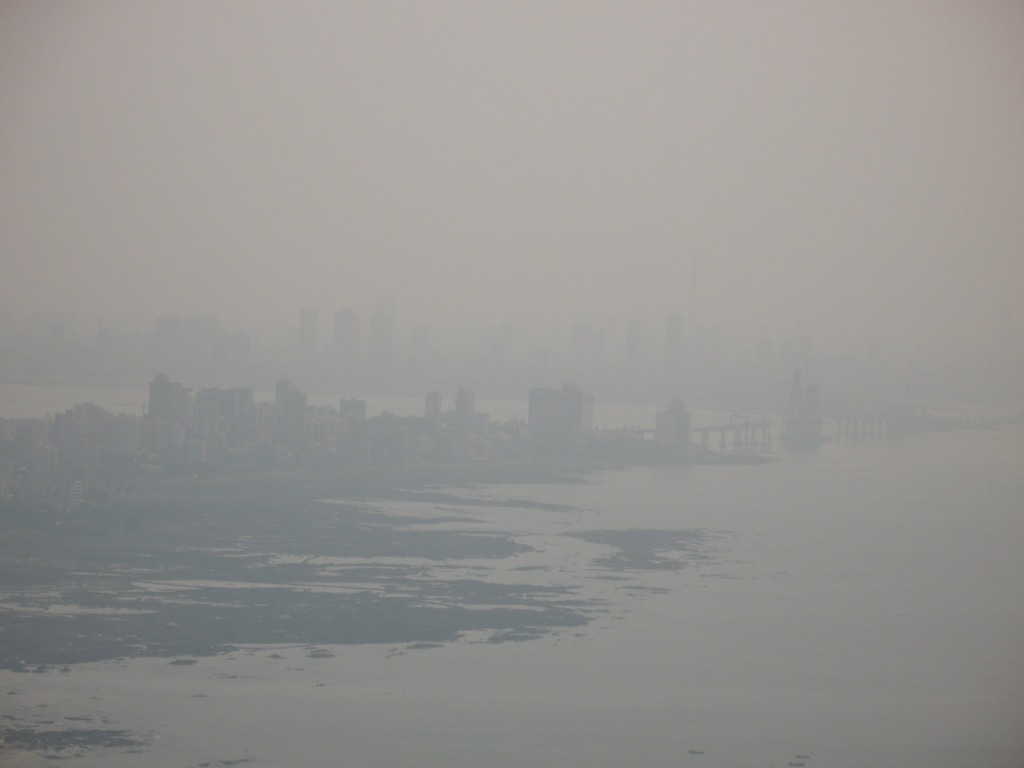
From the air, Mumbai was only partly discernible through the enveloping smog, but it is possible to pick out the under-construction Bandra-Worli Sea Link bridge. Similar to Panama City, the idea was to build an offshore highway along the length of the city to ease traffic congestion, however as of 2023 it was significantly scaled back with only around one quarter of the original plan being completed.
Created 2008 | Updated 2023
